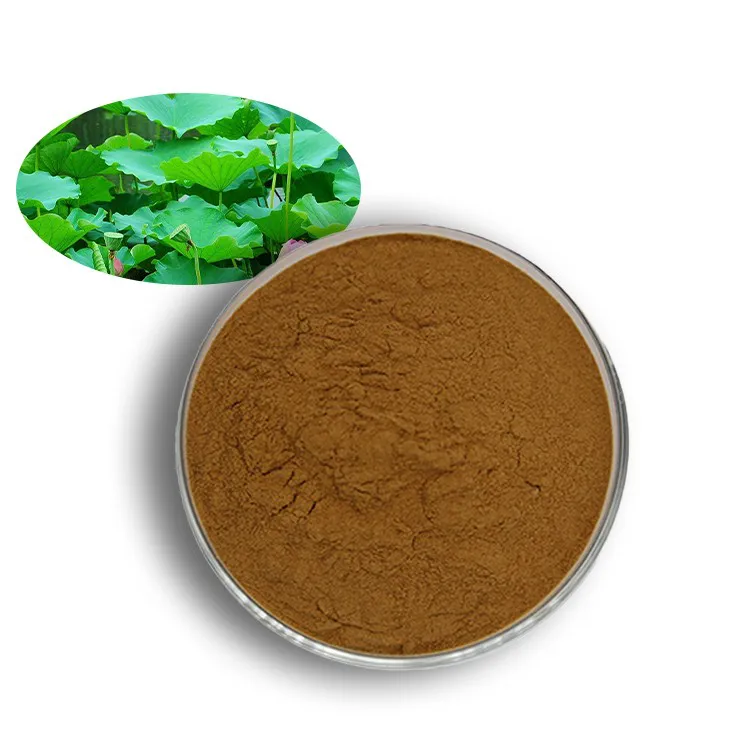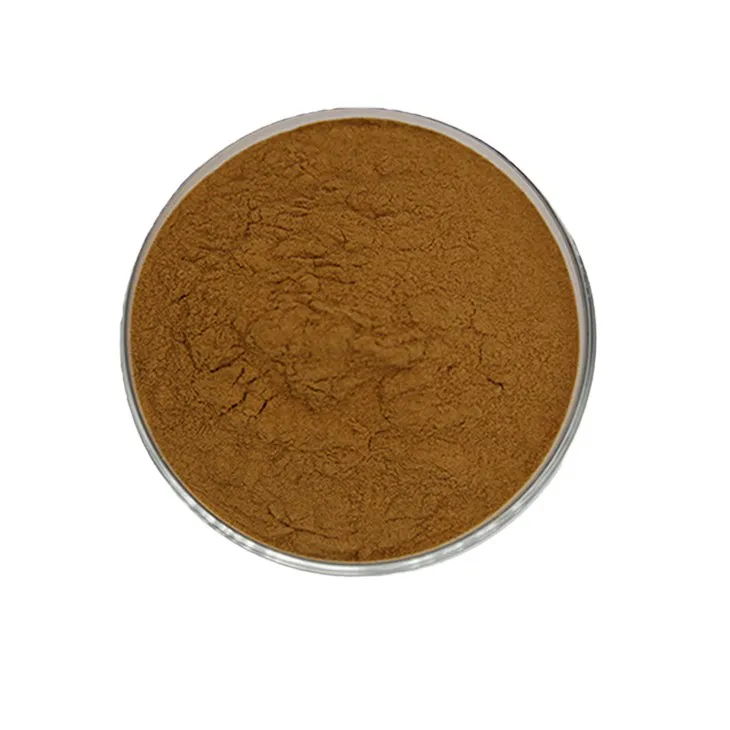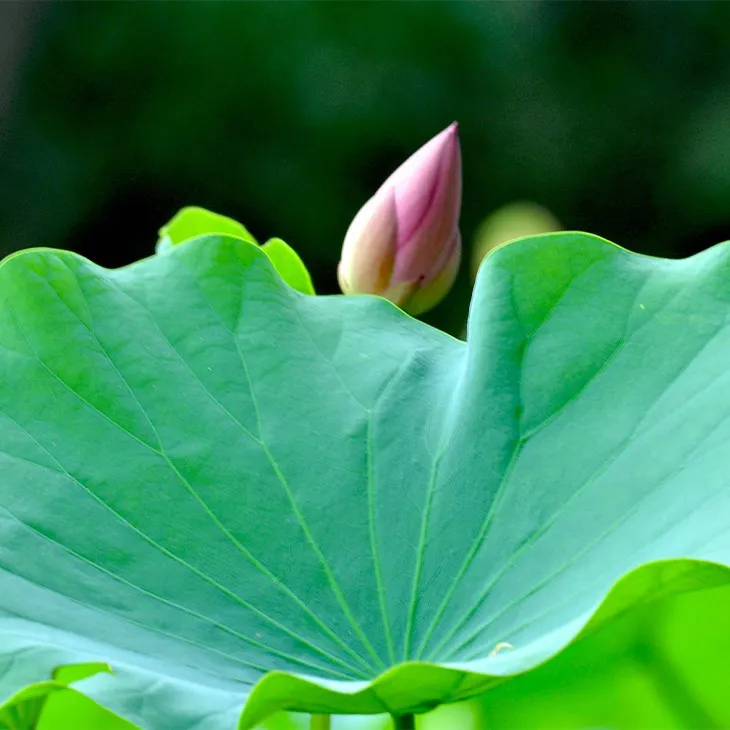- 0086-571-85302990
- sales@greenskybio.com
Active components in lotus leaf extract.
2024-11-29

1. Introduction
The lotus leaf has been used in traditional medicine for centuries in many Asian countries. Its extract is rich in various active components that contribute to its multiple beneficial effects. These components have attracted increasing attention in recent years due to their potential applications in health promotion, disease prevention, and treatment.

2. Flavonoids in Lotus leaf extract
2.1 Antioxidant Activity
Flavonoids are a major class of active components in Lotus leaf extract. They are well - known for their antioxidant activity. Oxidative stress is associated with many diseases, such as cancer, cardiovascular diseases, and neurodegenerative disorders. The antioxidant property of flavonoids helps to scavenge free radicals in the body. Free radicals are unstable molecules that can damage cells and DNA. By neutralizing these free radicals, flavonoids can maintain the integrity of cells and prevent oxidative damage. For example, Quercetin, a common flavonoid in Lotus leaf extract, has been shown to have strong antioxidant capacity in vitro and in vivo studies.
2.2 Anti - microbial Activity
Flavonoids also possess anti - microbial activities. They can inhibit the growth of various microorganisms, including bacteria, fungi, and viruses. The mechanism of anti - microbial action may involve disrupting the cell membrane of microorganisms, interfering with their metabolic processes, or inhibiting the replication of their genetic material. For instance, some flavonoids in lotus leaf extract have been found to be effective against common food - borne pathogens such as Escherichia coli and Staphylococcus aureus. This anti - microbial property makes lotus leaf extract potentially useful in the food industry as a natural preservative.

3. Phenolic Acids in Lotus Leaf Extract
3.1 Antioxidant Capacity
Phenolic acids are another important group of active components in lotus leaf extract. Their presence significantly adds to its antioxidant capacity. Similar to flavonoids, phenolic acids can act as free radical scavengers. They can donate hydrogen atoms or electrons to free radicals, thereby converting them into more stable molecules. Some common phenolic acids in lotus leaf extract include chlorogenic acid and caffeic acid. These phenolic acids not only contribute to the antioxidant activity of the extract but may also have other beneficial effects on health, such as anti - inflammatory and anti - carcinogenic properties.

4. Saponins in Lotus Leaf Extract
4.1 Impact on the Cardiovascular System
Saponins in lotus leaf extract are thought to have a positive impact on the cardiovascular system. One of the main ways is by reducing blood lipid levels. High blood lipid levels, such as high cholesterol and triglycerides, are risk factors for cardiovascular diseases. Saponins can interact with lipids in the digestive tract, inhibiting their absorption and promoting their excretion. This helps to lower blood lipid levels. In addition, saponins can also improve blood circulation. They may act on the blood vessels, causing vasodilation and reducing blood viscosity. This allows for better blood flow throughout the body, which is beneficial for the heart and other organs.

5. Other Active Components in Lotus Leaf Extract
In addition to flavonoids, phenolic acids, and saponins, lotus leaf extract may also contain other active components. For example:
- Alkaloids: Although the content may be relatively low, alkaloids in lotus leaf extract may have certain physiological activities. However, more research is needed to fully understand their functions.
- Tannins: Tannins are known for their astringent properties. In lotus leaf extract, they may contribute to the overall antioxidant and anti - microbial activities, although their specific mechanisms of action are still under investigation.
6. Health - related Applications of Lotus Leaf Extract
Due to the presence of these active components, lotus leaf extract has high value in health - related applications:
- Nutraceuticals: Lotus leaf extract can be used as a dietary supplement. The antioxidant and anti - microbial properties of its active components make it a potential ingredient for promoting general health and preventing diseases.
- Cosmetics: The antioxidant and anti - inflammatory properties of lotus leaf extract make it suitable for use in cosmetics. It can be added to skin care products to protect the skin from oxidative damage, reduce inflammation, and improve skin health.
- Pharmaceuticals: Some of the active components in lotus leaf extract, such as those with anti - microbial and cardiovascular - protective effects, may have potential applications in the development of new drugs. However, further research is required to isolate and purify these components and to study their pharmacological mechanisms in more detail.
7. Conclusion
In conclusion, lotus leaf extract contains a diverse range of active components, including flavonoids, phenolic acids, saponins, and others. These components endow the extract with antioxidant, anti - microbial, and cardiovascular - protective properties, among others. The potential health - related applications of lotus leaf extract are extensive, although more research is needed to fully explore and utilize these benefits. With the increasing interest in natural products and their health - promoting effects, lotus leaf extract is likely to receive more attention in the future.
FAQ:
What are the main active components in lotus leaf extract?
The main active components in lotus leaf extract include flavonoids, phenolic acids, and saponins.
How do flavonoids in lotus leaf extract function?
Flavonoids in lotus leaf extract are known for their antioxidant and anti - microbial activities. They can maintain cell integrity and prevent microbial infections.
What role do phenolic acids play in lotus leaf extract?
Phenolic acids in the lotus leaf extract contribute to its antioxidant capacity.
How do saponins in lotus leaf extract affect the cardiovascular system?
Saponins in lotus leaf extract are thought to have a positive impact on the cardiovascular system by reducing blood lipid levels and improving blood circulation.
Why does lotus leaf extract have high value in health - related applications?
Lotus leaf extract has high value in health - related applications because its active components such as flavonoids, phenolic acids and saponins together endow it with antioxidant, anti - microbial, and cardiovascular - system - improving properties.
Related literature
- Antioxidant Activity of Lotus Leaf Extract and Its Components"
- "The Impact of Lotus Leaf Saponins on Cardiovascular Health"
- "Flavonoids in Lotus Leaf: Properties and Potential Health Benefits"
- ▶ Hesperidin
- ▶ citrus bioflavonoids
- ▶ plant extract
- ▶ lycopene
- ▶ Diosmin
- ▶ Grape seed extract
- ▶ Sea buckthorn Juice Powder
- ▶ Beetroot powder
- ▶ Hops Extract
- ▶ Artichoke Extract
- ▶ Reishi mushroom extract
- ▶ Astaxanthin
- ▶ Green Tea Extract
- ▶ Curcumin Extract
- ▶ Horse Chestnut Extract
- ▶ Other Problems
- ▶ Boswellia Serrata Extract
- ▶ Resveratrol Extract
- ▶ Marigold Extract
- ▶ Grape Leaf Extract
- ▶ blog3
- ▶ blog4
-
The best organic Agaricus blazei extract.
2024-11-29
-
The best organic sugarcane extract.
2024-11-29
-
The best organic cocoa extract.
2024-11-29
-
Organic Non - GMO Camu - Camu Fruit Extract.
2024-11-29
-
Chaste Berry Extract
2024-11-29
-
Agaricus Blazei Extract
2024-11-29
-
Propolis Extract Powder
2024-11-29
-
Carrageenan Extract Powder
2024-11-29
-
Red Wine Extract
2024-11-29
-
Reishi mushroom extract
2024-11-29
-
Camu Camu Extract
2024-11-29
-
Sophora Japonica Flower Extract
2024-11-29
-
Berberis aristata Extract
2024-11-29
-
Shikone Extract
2024-11-29





















